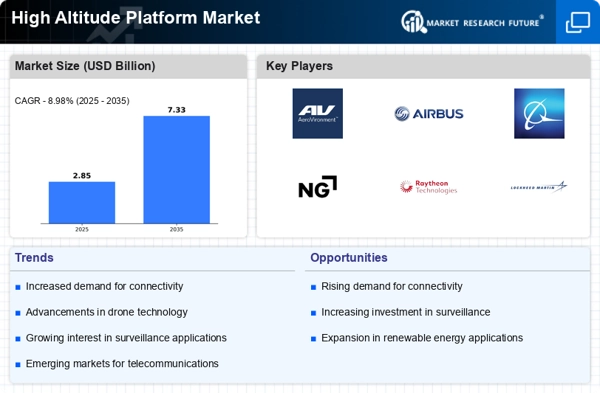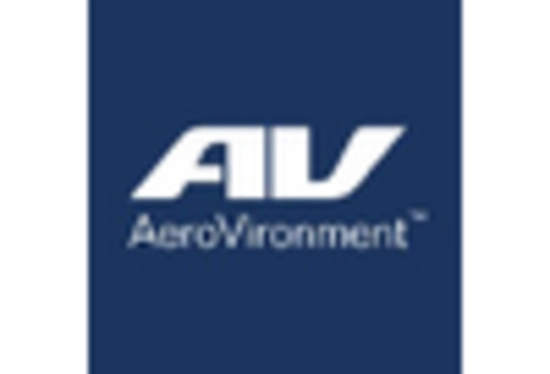Advancements in Surveillance and Security
The High Altitude Platform Market is benefiting from advancements in surveillance and security applications. High altitude platforms are increasingly utilized for monitoring borders, critical infrastructure, and large events, providing a strategic advantage in security operations. The integration of high-resolution imaging and real-time data analytics enhances the effectiveness of surveillance efforts. Recent market analyses suggest that the demand for aerial surveillance solutions is on the rise, with high altitude platforms expected to capture a significant share of this market. Projections indicate that the surveillance segment of the high altitude platform market could reach USD 11 billion by 2026, reflecting the growing emphasis on security in various sectors.
Growing Applications in Disaster Management
The High Altitude Platform Market is increasingly recognized for its potential applications in disaster management and emergency response. High altitude platforms can provide real-time data and communication capabilities during natural disasters, enhancing situational awareness and coordination among response teams. The ability to deploy these platforms quickly in crisis situations is a significant advantage. Recent studies indicate that the use of high altitude platforms in disaster scenarios can improve response times by up to 30%. As governments and organizations prioritize disaster preparedness, the demand for high altitude platforms is expected to rise, potentially leading to a market valuation of USD 14 billion by 2029.
Increased Demand for Connectivity and Communication
The High Altitude Platform Market is witnessing a notable increase in demand for connectivity solutions, particularly in remote and underserved regions. High altitude platforms offer a unique advantage by providing wide-area coverage and high-speed internet access, which is essential for bridging the digital divide. As more individuals and businesses seek reliable communication services, the market for high altitude platforms is likely to grow. Recent data suggests that the demand for broadband connectivity in rural areas has surged, with high altitude platforms positioned as a viable solution. This trend indicates a potential market expansion, with estimates suggesting a market value of USD 15 billion by 2028.
Technological Advancements in High Altitude Platforms
The High Altitude Platform Market is experiencing a surge in technological advancements that enhance the capabilities of aerial platforms. Innovations in materials, such as lightweight composites, and improvements in energy efficiency are driving the development of more effective high altitude platforms. For instance, the integration of advanced sensors and communication technologies allows for better data collection and transmission. According to recent estimates, the market for high altitude platforms is projected to reach USD 10 billion by 2026, reflecting a compound annual growth rate of approximately 15%. These advancements not only improve operational efficiency but also expand the potential applications of high altitude platforms in sectors such as telecommunications, surveillance, and environmental monitoring.
Regulatory Developments Supporting High Altitude Platforms
The High Altitude Platform Market is influenced by evolving regulatory frameworks that facilitate the deployment of high altitude platforms. Governments are increasingly recognizing the strategic importance of these platforms for national security, disaster management, and communication. Recent regulatory changes have streamlined the approval processes for high altitude platform operations, thereby encouraging investment and innovation. For example, the Federal Aviation Administration has introduced guidelines that promote the safe integration of high altitude platforms into national airspace. This regulatory support is expected to bolster market growth, with projections indicating that the industry could expand significantly, potentially reaching USD 12 billion by 2027.


















Leave a Comment